- Home
- Sebastian Faulks
The Fatal Englishman: Three Short Lives Page 12
The Fatal Englishman: Three Short Lives Read online
Page 12
Clare Wood’s letter to Mrs Wertheim the following day was remarkable:
My dear Lucy,
Thank you for all your dear sympathy, of course I should love to see you but don’t feel like talking to anyone until after tomorrow. The funeral is tomorrow at three. As I said in my wire I could see you on Sunday and love to or any other time you might choose. The telephone was so bad last evening and we were so upset that Betty could hardly understand what you were saying. Thank you so much for telegraphing. You will understand dear why I can’t write more now, my heart is too full but there is one thing I want you to do and that is if you know where Kit has sent his new pictures to, were they addressed to you?
I am so sorry to trouble you about it but we think we ought to know where they are, as Kit told me yesterday they were all packed up and sent off, but where to I don’t know. Could you let me know this by return in case you cannot come to see me just now.
Very much love, dear Lucy. Ever Yours, Clare.
The lines of Clare Wood’s character – her love and ambition for Kit, her altruism and politeness – were starkly laid out.
Frosca, meanwhile, was alone in Paris when she received Winifred Reitlinger’s letter. She wrote to Winifred Nicholson (in French, though for once her terse and beautiful style fell apart):
Dear Winifred,
I beg you to write to me, speak to me of Kit. I know how much you loved him and what the loss of a man like him means. I am suffering terribly and the only consolation I have is to talk to the people he loved and who loved him like you. Teach me, tell me everything that is your idea of good, or of the hope you have in life. Perhaps that will bring me some consolation. I am appalled, I just cannot accept this injustice. I find it terrible to have to live on this earth if such atrocities are allowed to happen … Dear Winifred, tell me something, write, I can think and speak of nothing but Kit. What an angel, what a marvellous being – and how will I be able to accept life without him, how can I carry on, start again. Life will never again give me something as perfect as Kit was for me. I am very unhappy, I need help. Write to me. I embrace you with all my heart. Frosca.
Winifred and Ben Nicholson replied, but Frosca was still almost demented: ‘I cannot tell you what a state I am in. I don’t even know if I am alive … Nothing I say can explain to you the state of my heart.’
Tony Gandarillas was in Biarritz. He wrote a postcard to Winifred Nicholson: ‘Kit will always be alive between us – We must do all we can for his memory – I am so frightfully unhappy that I can’t write yet and tell you all I want – He meant to me more than my children and all my family, a friend like Kit is very rare in this world. I didn’t deserve his friendship and great affection … Don’t leave me quite alone – I must be near Kit’s friends.’
In a letter from Madrid he wrote: ‘I also see exactly like you in most of his paintings that journey to the far horizon and the longing for which is beyond this world. He is gone and I can’t part with him. I think I could have saved him and I feel more miserable each day.’
Wood had once described Gandarillas as a ‘chittering, charming, childish and always cheerful small monkey’. He was irresponsible, but he was irresistible. It was probably with him that Wood first smoked opium, and this knowledge added to Gandarillas’s torment. Both he and Cocteau had had the money and the sense to undergo cures; if only he had stayed closer to Wood he might have seen the danger signs and financed some treatment. Gandarillas was tormented by the feeling that he might have prevented the catastrophe. He wrote to H.S. Ede. the curator of the Tate Gallery, who had become a friend of Wood’s in London: ‘It is marvellous of you to have done all that work in Minton Place. I couldn’t have done it. I think I would have died. I couldn’t have seen so many things of the past, the memories of the last ten years of my life. I can’t have any serenity over Kit’s death. I know it is wrong but I can’t help it. I feel I should have saved him.’
By the end of September, Gandarillas’s anguish was no better. He wrote to Ede: ‘You know what it means to me, his work. It is all my life as I have been waiting for the day he will become great. Whatever I do I can’t think of anything else but Kit and I feel more and more unhappy each day.’
The days of Taormina, the lobsters in bed, the terrace with the Roman mosaic; the lovely earnest Englishman out painting all morning then back for lunch beneath the trees… it was hard for Gandarillas to believe that this was the ending to which the treacherous years had all the time been leading. His anguish led him into a nervous collapse.
‘I can’t have any serenity …’ This was the agony of Wood’s death for both Tony Gandarillas and Frosca Munster. Apart from the pain of bereavement, there was in his case the feeling of impotent frustration, the sense that he could have helped; and in her case there was a raging resentment of what she saw as a terrible injustice.
If anyone were to have serenity it would be Winifred Nicholson; at least she had religious faith. In her short memoir, ‘Kit’, she expressed her feelings in the conventional language of her Christian Science; she concluded on a note of radiant optimism. But this was later. At the time she, too, was distraught. Her marriage to Ben was coming to an end and she went to the Isle of Wight, then to Paris, as though to be near Kit.
Beneath the clouds of her rhetoric, she had her characteristic moments of insight. ‘Besides the awful greatness of the universe, its solitude, its silence, its power, the vast deep unknown, there is only one thing as awe-inspiring, and that is the soul of a man who is inspired by a purpose that risks all to scale the high skies, to aspire to abstract beauty herself.’
‘Risks all’ did accurately suggest the recklessness of Wood’s pursuit of his artistic vision in the last summer of his life. He was not willingly self-destructive, but it is clear that he did not care whether the pursuit destroyed him: he was indifferent. And according to Winifred Nicholson, in a letter to H.S. Ede, Wood was aware of the possible consequences of his single-mindedness: ‘The tragic element was always hard upon his heels. What the tragic element was, I, not being God, do not know, but I felt that fear of it always from the moment I saw him … I have never felt fear like that – I remember it when we were walking along the quay in Paris at night under the quivering poplars, beside the quaking river – and he turned of a sudden and said, “I must enjoy every minute of this springtime in Paris – You know it might be one’s last.”’
Such scraps of conversation, even if only preserved in scribbled letters no one sought to publish, made fertile ground for a romantic myth. Wood’s physical beauty, the mystery of his awful death, his bisexual glamour, the parties of the beau monde, the drugs, the frenzied work in a ‘curious lonely country by the sea’, the beautiful boy as victim of a cruel world… It is not surprising that Christopher Wood became in the 1930s a minor cult hero.
Much of the interest in him was of the kind that always attaches to such figures. Yet at the core of Wood’s life and work there remained something that was not so easy to dismiss. Winifred Nicholson was always a partial witness with an evangelical view to propound, but she was also a distinguished painter who knew Wood well. There was almost always something true in what she had to say. This is what she wrote in a private letter to H.S. Ede:
Those last pictures are to me at the passport office of madness. Of course I don’t value those last pictures as his highest work. It is a swan song, but like a swan song carries with it the haste, the doom of the end … not because his song is complete but because he knows it is his last chance – and he’ll put his soul into it to the last ounce. Not one of those pictures carry in them a bud – a new life for other pictures – I mean that no one who is creating would want to have one in his room – as one would his earlier ones. Any Cézanne, however late and complete, carries that bud – like all images of the Buddha carry the tiny image of the next Buddha to be, in the circle of their halo … High courage, daring is the key word of his painting – something flaunted in the face of suicide.
To Frosca
Munster she wrote: ‘I consider, you know, that he practically gave his life for those pictures. He put everything he knew and every force he possessed into them, and then had nothing left to battle with his opium difficulty – which he could have coped with quite easily, like Tony and other people can, if he had not put his whole soul with that whole-hearted strength and impulse which was his more than anyone’s… Anyone who has painted knows that such work can only be done at great cost – incalculable cost.’
‘He practically gave his life for those pictures…’ This was the peculiarity of Christopher Wood. His own letters from Tréboul made it clear that he was prepared to ignore all danger in order to get his vision on to canvas. His determination for his art was stronger than his attachment to his own survival. Although such a choice may be central to romantic myths, it is extraordinarily unusual in reality. What does it mean?
It implies, to begin with, a disregard for self, for the meanest animal instinct of self-preservation. Wood did have, periodically at least, that disregard. Although he was proud of his work, he was not proud of himself: he was not at ease with his nature, his impulses or his crippled body.
Winifred Nicholson wondered in her letter to Frosca Munster what it was that made Kit so unhappy, so eager to grasp the moments of calm and sunlight when he had stayed with her at Bankshead. She did not know, but thought it went back to his childhood, to his parents, to his illness and the pain it brought him.
At the end, on 21 August 1930 at Salisbury Station, Christopher Wood killed himself because he was of unsound mind, as the jury rightly believed. That unsoundness was precipitated by that most unromantic of causes – a ‘combination of factors’. He was suffering paranoid delusions, and it is possible that these were the first symptoms of a psychosis, of a schizophrenic breakdown. However, he was older than most young men when such illnesses begin; there was no family history of it; and there are simpler explanations of the symptoms. He had worked too hard, he had seriously abused powerful drugs and he was extremely worried about money. Ben Nicholson wrote to H.S. Ede: ‘Perhaps that lack of the money he seemed to need had got out of all hand. I know he wanted to marry Frosca but felt he had not the money and must give her the best of everything.’ It was one thing to be a penurious student in an attic studio; in fact it was part of the bohemian life, particularly when the hunger could be assuaged by large meals in Tony Gandarillas’s house in the Avenue Montaigne: but to have the woman you loved denied you a second time because you were still too poor, despite being, as he believed, ‘the first English artist since Whistler to be shown in Paris’ … this was bitterly hard to take.
Wood may also have felt what Winifred Nicholson described in his pictures: that there was no way forward, that he had forced his talent to the limit. If he were to progress from the paintings of 1930 he might, like Ben Nicholson, have had to start again. Within a year, Nicholson had turned to abstract painting. The Seven & Five Society no longer exhibited figurative work, and English art, so slow to catch the tide of Modernism, began to find its way. Wood was not interested in this kind of painting. His vision derived from his apprehension of the real world. There is pathos in the fact that what may have been his last picture, ‘Zebra and Parachute’, is dominated by the Villa Savoye in all its harsh, abstracted angles. What was human – the man on the parachute – was already dead.
The subject of the delusions provided a further clue: the Guinness family. The Meraud affair humiliated Wood because it made public all his shortcomings: his drugs, his poverty, his homosexual past. He had not wanted these to be the talk of Cannes and Paris, particularly since his homosexual feelings were intimately bound up with his private debt to his mother and the passage of illness in his youth which had formed his creative ambition. He was frightened by the power of his feeling for Meraud, though he was also ashamed of his inconstancy in the year’s separation. Mrs Guinness had read his mind too well: she had doubled his humiliation.
The pressures on Christopher Wood at the end were really of his own devising. He had set out to make his art worthy of his mother and by it to repay her for having saved his life. In so doing, he would validate his life and its choices against the judgement of his father, of his father’s generation and all the presumptions of Huyton and Edwardian England. By the time he reached a point when his art was worthy of the task he had set it, the factors in the equation were changed and haywire. He himself had developed; he was exhausted, strung out from drugs, poor, unbalanced and with no artistic way forward. He had come up with the answer he had set out to find, but by then the questions had all subtly changed.
Wood’s paintings survived as pleasing and independent works of art with little need of literary explication. The much-remarked ‘simplicity’ of his character and the direct and figurative style both worked to his advantage. In the years since his death his reputation has slowly risen, though exhibitions have not always been able to show his best work because it is so scattered.
Retrospective exhibitions of his work were held at the Wertheim Gallery in 1931 and the Reid Lefèvre galleries in 1932. Opinions on the merit of his painting ran from the ecstatic to the dismissive, but most were favourable. Some newspaper reviewers were unhappy about a ‘childish’ quality in the painting and about a clumsy line in the drawing. Most of these reservations collapsed, however, in the face of the Tréboul paintings, which were almost universally admired. The debate was then about the scale of the achievement; its existence was not seriously disputed.
Of the 1932 exhibition at the Reid Lefèvre galleries Paul Nash wrote that the paintings ‘seem to express, beyond almost any work I can recall, the mood and consciousness of their author’. Cyril Connolly wrote in the Architectural Review that Wood ‘had something that other English painters have not got and it was only visible in his late pictures; a kind of architectural pleasure, a deeper happiness at getting over to France than the others felt and a stronger palette to express it’, which was partly true, but seems to say as much about Connolly’s francophilia as about Wood’s painting.
John Piper was a sympathetic visitor to the exhibition, and wrote with slightly muddled passion about what he saw. He was quick to stamp on the ‘childlike’ criticism, though his method of doing so was not conclusive and depended on praising Wood’s restraint. Piper’s most interesting reaction was his belief, shared with his fellow-painter Winifred Nicholson, that Wood might actually have ‘realised himself more or less fully’. It is not completely clear how Piper reached this conclusion, but it was certainly interesting that while most non-painting critics spoke of what might have been and of the tragic loss, Winifred Nicholson and John Piper suspected that there might not, in fact, have been any more to come.
In London, the Morning Post, most conservative of daily papers, was deeply impressed. Wood’s early work, the art critic wrote, ‘was proof of genius in bud, but few of his most ardent admirers could have hoped for the wonder of its opening apparent in the collection on view.’ To this reviewer, Wood was ‘the most gifted young artist of this century.’. It is impossible not to think of the emotions with which the newspaper was passed across the breakfast table at Reddish House, Broad Chalke.
The Manchester Guardian hoped that ‘the fact of his early death will not make a peg upon which to hang a sentimental myth. His work was good enough to have no need of it.’ The Spectator gave and took away: ‘Too much must not be made of his actual achievement in spite of the unusual promise that is evident in his last work, but it was good enough to secure him a place at least in the history of contemporary painting.’
A place at least… That was what Wood’s work had won him, and the nature of that place could later be seen more clearly by critics and public. For Wood’s friends and family there was the anguish of thinking that he might have done more; that if he had painted for just another five years he would have established himself unarguably-beyond captious remarks about clumsiness, childishness or bright young things – as the equal, for instance, of Sickert. Against
this must be set John Piper and Winifred Nicholson’s fear that he had, like the swan, sung his song.
Wood’s paintings have consistently increased in value over the last sixty-five years, with the best fetching prices of £50,000 or more. The unsentimental register of the market is one way of judging a painter’s worth. Another instructive way of looking again is to focus on the watercolours. Many of these, done while he was travelling with Gandarillas in the Mediterranean, are not subject to the same reservations as the early oils. And, as Geoffrey Grigson pointed out in a subtle review of Wood’s watercolours at the Reid-Lefèvre galleries in 1934: ‘He could do [his] best in oil; but he could also do it in watercolour; and since watercolour is the most deceptively difficult of media, one’s belief in his excellence is refined.’
A final clue to Wood’s status can be found in superior criticism, such as that of Geoffrey Grigson, or that of Eric Newton, the art historian and Sunday Times critic. Newton wrote more knowledgeably than any of his contemporaries about Wood’s painting. He was an enthusiast, and, on the principle of excluding extreme opinions from the consensus, he should perhaps be discounted; but the internal authority of his writing is persuasive.
Reviewing the huge exhibition mounted by the Redfern Gallery at the New Burlington galleries in 1938, Newton wrote:
In order to realise Christopher Wood’s achievement one has to ask oneself how many British painters of our century could fill a gallery of this size with 500 paintings without seeming monotonous or pretentious or trivial. The question is not a rhetorical one. I could think of three painters who could do it, but not more than three.

 Devil May Care
Devil May Care Pistache Returns
Pistache Returns The Girl at the Lion D'Or
The Girl at the Lion D'Or Pistache
Pistache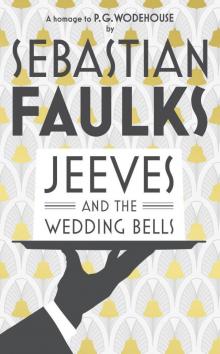 Jeeves and the Wedding Bells
Jeeves and the Wedding Bells A Week in December
A Week in December The Vintage Book of War Stories
The Vintage Book of War Stories Engleby
Engleby Birdsong
Birdsong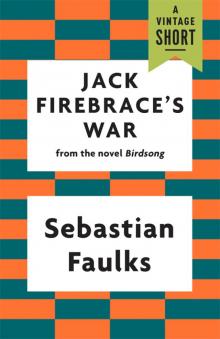 Jack Firebrace's War
Jack Firebrace's War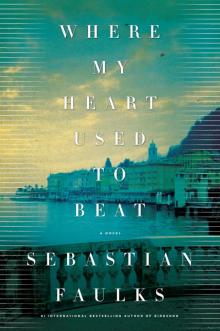 Where My Heart Used to Beat
Where My Heart Used to Beat A Possible Life
A Possible Life The Fatal Englishman: Three Short Lives
The Fatal Englishman: Three Short Lives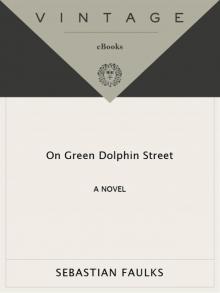 On Green Dolphin Street
On Green Dolphin Street Charlotte Gray
Charlotte Gray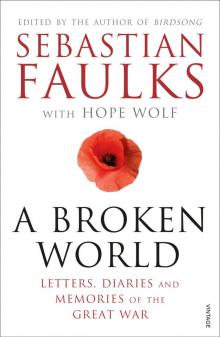 A Broken World: Letters, Diaries and Memories of the Great War
A Broken World: Letters, Diaries and Memories of the Great War Human Traces
Human Traces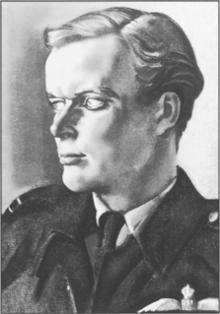 The Fatal Englishman
The Fatal Englishman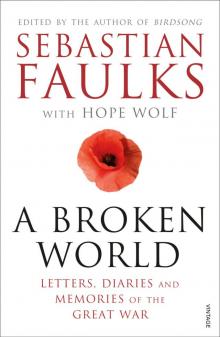 A Broken World
A Broken World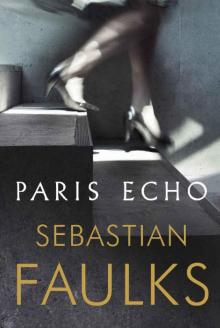 Paris Echo
Paris Echo War Stories
War Stories Girl At the Lion d'Or
Girl At the Lion d'Or